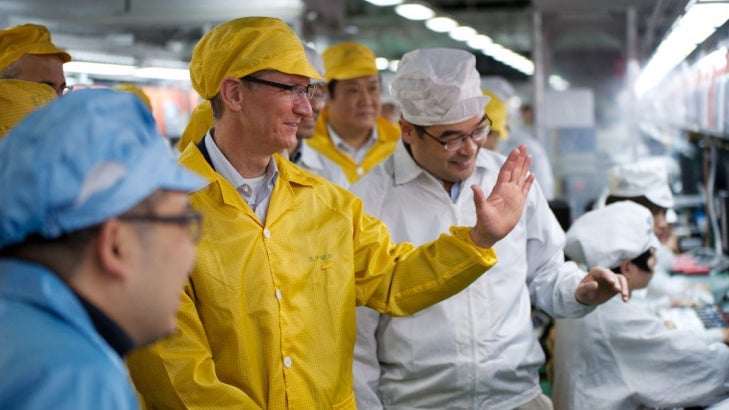Modeling the iPod economy: a brighter future for low-skilled workers in developed countries?
The biggest economic story of the past three decades is the rise of China and other emerging markets, a boom built on industrialization driven by manufacturing exports once produced in the domestic markets of developed countries. As low-skill jobs increasingly move abroad, forcing a challenging transition into a post-industrial economy, these developed countries find themselves debating whether this free trade really benefits everyone.


The biggest economic story of the past three decades is the rise of China and other emerging markets, a boom built on industrialization driven by manufacturing exports once produced in the domestic markets of developed countries. As low-skill jobs increasingly move abroad, forcing a challenging transition into a post-industrial economy, these developed countries find themselves debating whether this free trade really benefits everyone.
Now, in a paper that economist Tyler Cowen calls “one of the most important of this year,” economists Daron Acemoglu, Fabrizio Zillibotti, and Gino Gancia have created a new model for this “iPod economy.” It attempts to show what happens when firms maximize profits by sending some production off-shore, where lower-paid workers can make products, while maintaining or even expanding higher-skilled jobs in the US:
Despite its prevalence, the implications of offshoring for wages, skill premia and incomes are still debated. The iPod example illustrates its different potential effects. Though most production jobs related to the iPod are offshored, a significant number of high-skill engineering jobs and lower-skill retail jobs are created in the United States, and more than 50% of the value added the iPod is captured by domestic companies.
The economists sketch out a mathematical model that examines what would happen in two countries, “West” and “East,” that share a US-and-China style economic relationship. Their model predicts that wages for low-skilled workers in developed countries will go down due to jobs being done overseas and the increasing value of more skilled labor in that kind of economy; in emerging markets, workers benefit from the economic expansion. This pretty much matches what we’ve seen in recent years. It’s why China is growing and economists stress education and high-skilled immigration as a cure for wage stagnation here.
The model goes on to offer explanations for two weird phenomena. First, why innovation has slowed in the US in recent years: It’s cheaper to get productivity enhancements by sending manufacturing abroad, and until that stops being the case, most kinds of productivity enhancement won’t offer the same financial return.
Second, why wage growth in China has been so slow to catch up with productivity: Until imitators—companies making low quality copies of products and technology from the West—are driven out of the market entirely, the higher productivity off-shore manufacturers don’t need to raise wages.
But things get interesting when the economists look into the future.
It turns out that over time, as the volume of offshoring increases, the bias in favor of skilled workers starts to reverse itself as the difference in wages between east and west equalizes. As it does, incentives for innovation rise. “The unequalizing impact of offshoring is thus greatest at the beginning,” the paper concludes. “[O]ffshoring and technical change are substitutes in the short run but complements in the long run.” (There are a lot of high-level caveats and considerations that I’m leaving out; if you’re worried about the endogeneity of the direction of technological change in the paper, you should probably just read it.)
Its authors warn that low-skilled workers in the developed economies could still end up worse off than they were before off-shoring became a viable production strategy, but their model’s suggestion that the worst is behind us. The growing bias toward skilled workers could slow or even reverse, helping alleviate criticism of the deepening linkages between developed and emerging economies.